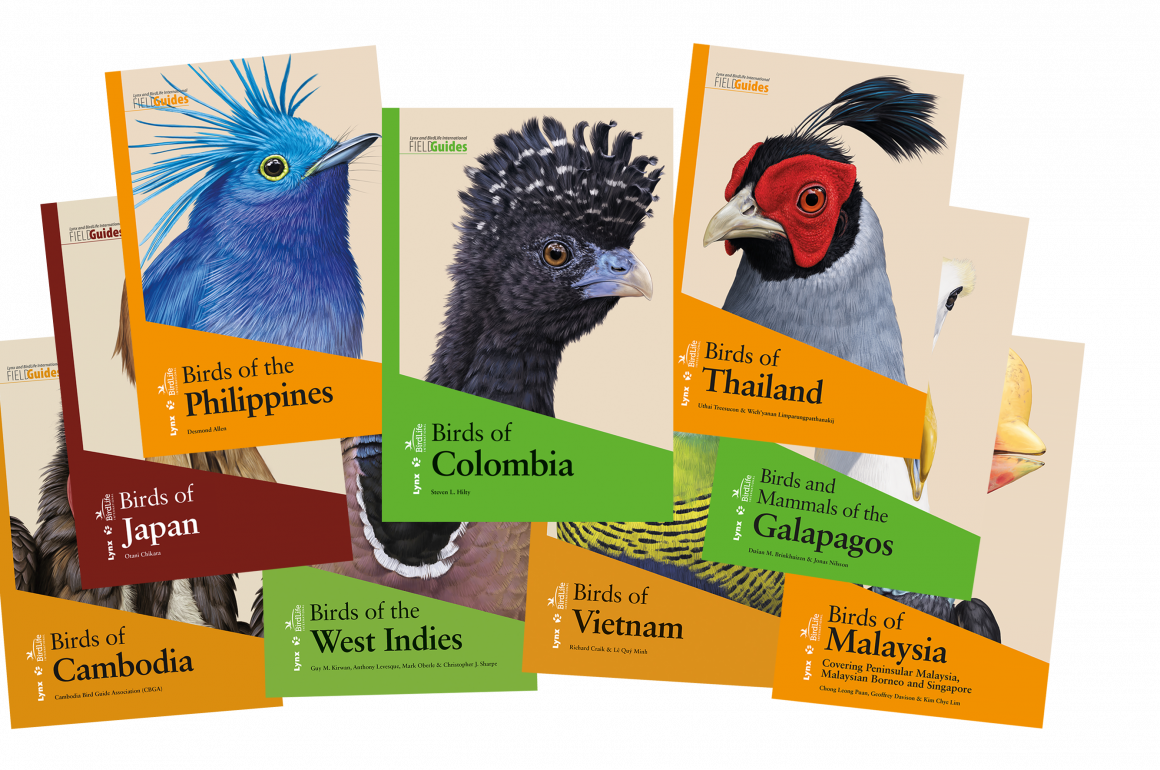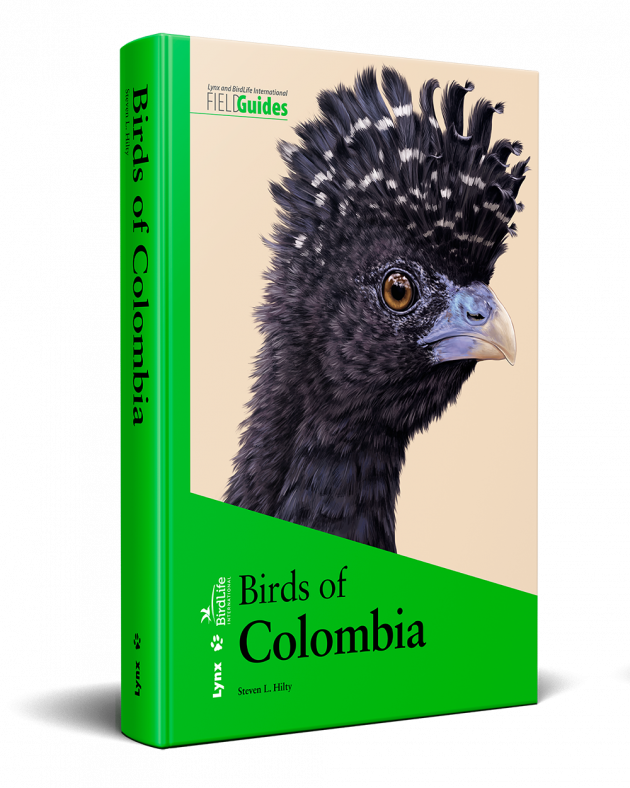
I understood that my favourite, and in my opinion the very best field guide series in the world – Lynx & Birdlife International – is practically dead because of the high costs of developing a field guide and low sales during the pandemic.
The first title of the ‘official’ series (there were two ‘prequels’) was “Birds of Thailand“, published in 2018. The most recent was the ninth one, “Birds of Colombia” in 2021. And after it, I was looking forward to so many field guides and asked myself which one will come next… until I realised the premature end of the best of the best field guides. So, it was a dreamtime. Never knew it would be over so soon. Let me reflect on the series’ common traits. All these guides follow the same design. They come as a result of cooperation between Lynx and BirdLife International and they are mostly country-focused (so far, only the West Indies has the region-wide coverage). One thing I deeply respect is the addition of common bird names in a local language.
Let me reflect on the series’ common traits. All these guides follow the same design. They come as a result of cooperation between Lynx and BirdLife International and they are mostly country-focused (so far, only the West Indies has the region-wide coverage). One thing I deeply respect is the addition of common bird names in a local language.
The authors are not just experts on the area, but usually are from within the country in focus. The illustrations come from the Handbook of the Birds of the World series, plus some additional images prepared specifically for the guides. Annoyingly, not many non-passerines are shown in their immature plumage, and the coverage also lacks passerines shown in flight (apart from swallows and martins).
The distribution maps are produced from the digitized maps compiled by BirdLife International and Lynx, which are then improved with local input from the authors. For species with more than one subspecies in the region, the separate resident/breeding ranges of the distinct subspecies are indicated on the map. The taxonomy follows the HBW and BirdLife International Illustrated Checklist of the Birds of the World. To give more attention to local taxa, all subspecies groups present in the region have full entries as well.
The features not commonly encountered in guides by other publishers include a QR code for each species (linking to a gallery of photos, videos and sounds), subspecies ranges denoted on the maps, subspecies groups with full accounts as well as local species name and local conservation status. The final novelty and a very successful one, is the positioning of range maps. They aren’t at the text page, hence leaving more space for longer descriptions where necessary, but inside the plates, next to bird paintings, so you can quickly check if the species occur in the particular region or not.
Also, with each copy of the book you get a voucher with a Lynx Edicions website page link and a code to download the .pdf country checklist that follows the same taxonomy as your field guide (and you wouldn’t want it any other way).
As a rule of thumb, all books that I reviewed were of noticeably high quality. My complaints were minor, but also uniform for the entire series (making it more of an editor’s choice, rather than an oversight), and so far I would dare to say you cannot go wrong if choosing a book from this series.
Most (possibly all?) books are still available, so buy the destination of your dreams while the stocks last, but also to show the publisher that the series is very worthy of renewing!













oh no!!! I was eagerly awaiting Zambia… after only two parts of the Birds of Brazil (Wildlife Conservation Society) another premature demise.
This is terrible news. The books are wonderful.
I was eagerly awaiting Brazil… but still hope this is not final
Very sad to see this series ending, with so much more to do, I guess it’s a covid casualty like so much else
Lynx Edicions commented on this at my Twitter: “Many thanks for your kind words! And don’t worry… the collection will keep growing!”
I have to admit that I do not like those field guides. The maps are too small, and while the pictures are okay, better pictures can be found in other field guides. Additionally, it’s clear that those pictures were not originally meant for a field guide. For example, when comparing them to works like “Birds of Brazil: The Atlantic Forest” (Ridgely et al), “The Birds of Costa Rica” (Garrigues and Dean), or “Field Guide to the Birds of Australia” (Simpson and Day), the Lynx field guides are much worse. I bought Lynx’s “Birds of Vietnam” and “Birds of Malaysia” only because they were the only options available. However, I would certainly prefer to buy something from “non-Lynx” field guides if they were available.
I would disagree, e.g. Dean’s illustrations in Birds of Costa Rica look like something belonging to the 1980s and not the 21st century